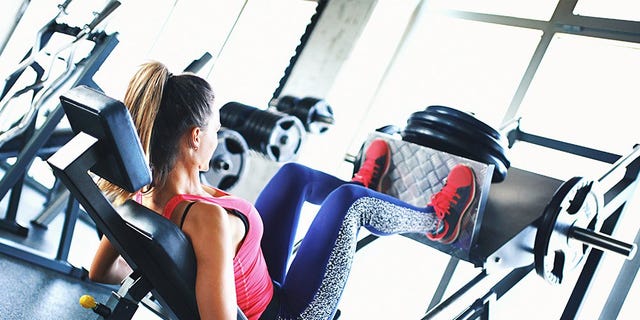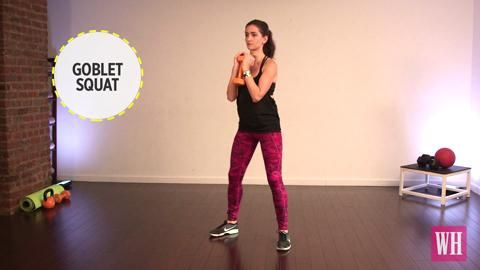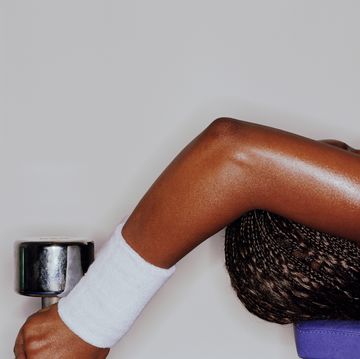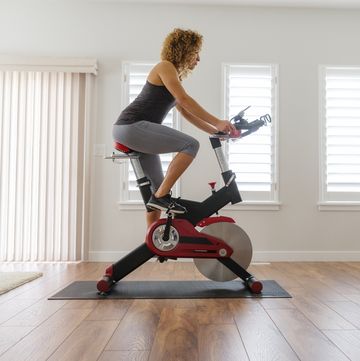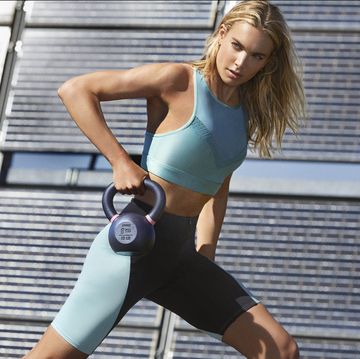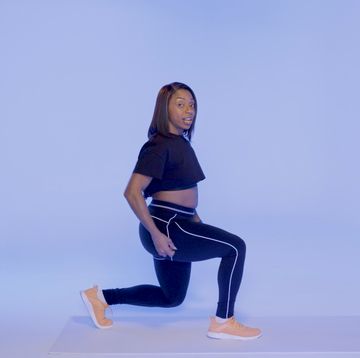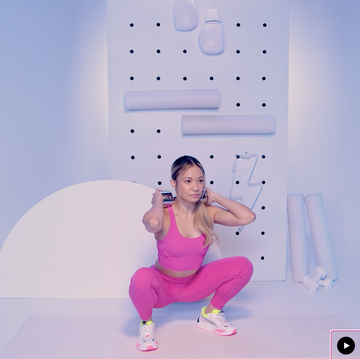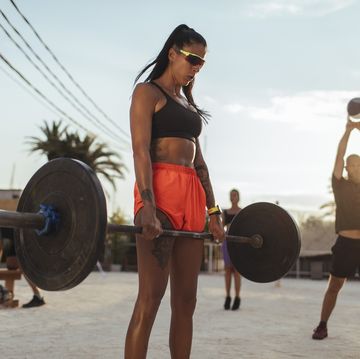Bodyweight exercises may be all the rage these days, but if you’re in the mood to test your strength at the gym, machines are still a great option. You just need to know how to use them safely, and keep a few tips in your back pocket to maximize their full potential.
On days you want to work your lower body, don’t shy away from the leg-press machine (even if you see hulk-like dudes grunting on it). It’s a totally customizable piece of equipment, so you don't need to be able to lift hundreds of pounds to use it (though, props if you’re able to). Plus, it can work wonders on your thighs, hamstrings, and quads. Here’s what you need to know before your next weight-lift.
RELATED: These Are The 4 Best Leg Workouts For People Who Want To See Amazing Results
Just like with any other workout, a proper warm-up is key. Andy Coggan, certified personal trainer and director of fitness academy at Gold’s Gym, says your hips, ankles, and lower body muscles all need some love before hopping on the machine. He recommends five minutes of dynamic movement, be it walking, jogging, or cycling, followed by ankle circles, hips circles, and air squats to get you nice and limber.
Switch up your squat with these 20 variations that will help you tone your butt:
Once you’re in the seat, Coggan says it’s imperative that your hips stay put. “Never allow them to lift off of the seat at the bottom position of the leg press,” he warns. Doing so tilts your hips, which causes compression of the vertebrae and puts unnecessary stress on your lower back. If you’re not careful, it could lead to muscle strain or a hernia, he says.
RELATED: If You Have Back Pain, This Squat Is For You
One of the biggest mistakes people make is focusing too much on weight, and not enough on proper range of motion, says Coggan. But doing that prevents you from scoring all the benefits this machine offers. How do you make sure you’re working to the max? “Full range of motion will vary based on your personal mobility, but you should lower the platform as much as you can while keeping the hips firmly planted in the seat of the machine,” says Coggan. “If the hips begin to tilt, you have gone too far and should stop just short of this point in future reps.”
(The Slim, Sexy, Strong Workout DVD is the fast, flexible workout you've been waiting for!)
Remember, you’re often dealing with a lot of weight on a machine, so caution is always imperative to preventing injury. And while Coggan says he often sees people try to blast through the second half of the movement (when you’re pushing the press back up to start), that’s the wrong way to go about it. Instead, he suggests using an even pace for lowering the platform and raising it back up. “Acceleration or momentum can decrease the effectiveness of the movement and increase chances of injury,” he says. Use your breath as a monitor (yep, you should be breathing the whole time). “Generally, a two count up and a two count down is smart,” he says.
No, you don’t want to shift them around during your reps—that could be dangerous. But you do want to mix up your foot placement if you’re busting out multiple sets, as Coggan says it will challenge different muscles. To start, place your feet in the center of the platform, about hip-width apart, toes turned out about 15 degrees. That’s your home base, and it works your entire thigh pretty evenly, he says. From there, try these variations to target your personal goals:
- Wide stance: works inner thigh
- Narrow stance: works outer thigh
- High on the platform: works hamstrings
- Low on the platform: works quadriceps
RELATED: 4 Workout Trends You Should Skip, According To Experts
Fact: It’s common for athletes to have strength and mobility imbalances and not even be aware of it. Often, one muscle fails to do its share of the work, or achieve proper position, while the other one compensates for its slacker partner, says Coggan. And that can lead to injury and less efficient movement, since the more symmetrical your body is, the better it performs. That's another benefit of the leg press—Coggan says it’s smart to use the machine to make sure each leg is developing and performing well on its own. “Do a few sets using one leg at a time—it’ll help eliminate compensations that may already exist, and show you where you may need to invest more work.”

Samantha Lefave is an experienced writer and editor covering fitness, health, and travel. She regularly interviews pro athletes, elite trainers, and nutrition experts at the top of their field; her work has appeared in Runner's World, Bicycling, Outside, Men's Health and Women's Health, Cosmopolitan, Glamour, and more.
